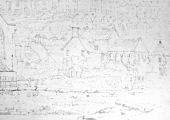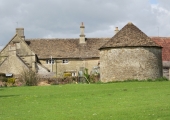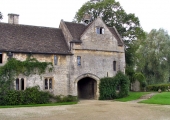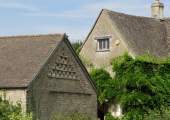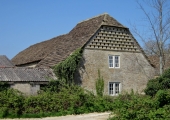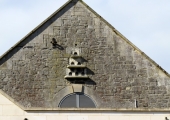.
Doves, Pigeons & Pigeonhouses
Hundred of Bradford on Avon, Wiltshire
.

.
Pigeons were formerly an important part of the rural economy, providing another source of meat for the tables of the nobility and abbeys. Young unfledged pigeons, called squabs, were the ones that were eaten, from after Lent was over until midsummer and again in the autumn when breeding began again. The droppings inside the dovecote also provided chemically-rich manure.
Until 1619 the right to keep pigeons was jealously guarded by lords of manors and some members of the priesthood. In that year it became legal for any freeholder to do so and farmers and innkeepers set up their own pigeon houses, dovecotes or lofts.
Free-standing buildings were provided with nest holes lining the inside of the walls and an entrance louvre on the roof. Lofts were also added to other buildings, such as barns or stables, usually in a gable wall.
Pigeonhouses existed in the middle ages in Bradford on Avon. A field at Barton Farm still bears the name Culver Close (the word culfre meant a pigeon), recalling the former pigeonhouse that provided squabs for the farm and perhaps for Shaftesbury Abbey. The Abbey also had pigeons at its farm in Atworth, which was recorded from the 14th to 18th centuries. There was another Culver Close in Church Street in Bradford and the pigeon house was next to the Saxon Church.
See the book by John & Pamela McCann 2011 The dovecotes and pigeon lofts of Wiltshire for the Wiltshire Buildings Record for much more information.


